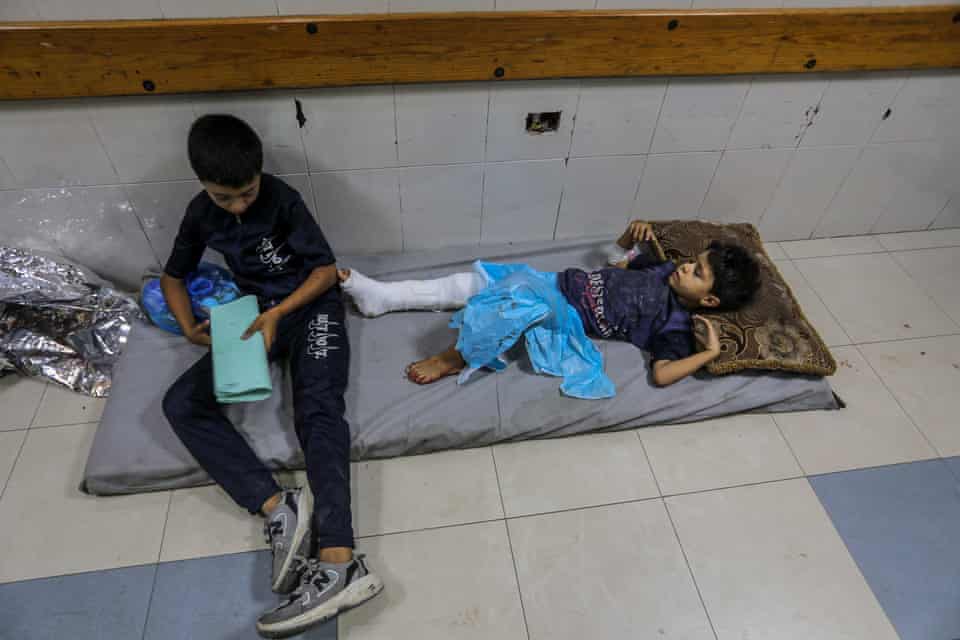No fewer than 32 Palestinians were killed and more than 100 injured on Saturday morning when Israeli troops opened fire on crowds gathered near two humanitarian aid hubs in southern Gaza, according to witnesses and hospital officials.
The incident, which occurred in the Teina area east of Khan Younis and near another site north-west of Rafah, has been described by those on the ground as “a massacre”. Witnesses allege that Israel Defence Forces (IDF) fired indiscriminately at groups of Palestinians, mostly young men, on their way to food distribution centres operated by the Gaza Humanitarian Foundation (GHF), an entity backed by both the US and Israeli governments.
Mahmud Bassal, a spokesperson for the civil defence agency, said most of the fatalities resulted from “Israeli gunfire”. The Nasser hospital in Khan Younis confirmed receiving 25 bodies and dozens of wounded patients. An additional nine people were reportedly killed near Rafah. Many of the injured are said to be in critical condition, with children and teenagers among the casualties.
Dr Atef al-Hout, director of Nasser hospital, described the influx of casualties as “unprecedented”, adding that the facility is severely under-equipped. “We’re unable to provide adequate medical treatment as we lack equipment, medicine, and personnel,” he told Haaretz.
In a statement, GHF claimed that no violence had occurred at or near its aid distribution sites, asserting that the reported shootings happened “far from our sites and hours before they opened”. The organisation reiterated its warnings against approaching centres during overnight and early morning hours.
The Israeli military stated it had fired “warning shots” near Rafah after a group of individuals approached troops and ignored calls to stay back. It said an investigation into the reports of casualties is underway but emphasised that the events occurred while the centres were closed.
However, eyewitness accounts paint a starkly different picture.
Mahmoud Mokeimar, who was among those heading towards the hub, told Associated Press reporters that the soldiers opened fire on the crowd after issuing warning shots. “It was a massacre,” he said. “The occupation opened fire at us indiscriminately.”
Another witness, Akram Aker, said troops used machine guns mounted on tanks and drones during the incident, which he said unfolded between 5am and 6am. “They encircled us and started firing directly at us,” he recalled.
Sana’a al-Jaberi, a 55-year-old woman, said she saw “many dead and wounded” as she fled. “We shouted: ‘food, food,’ but they didn’t talk to us. They just opened fire,” she said.
Four other witnesses corroborated the account, telling AFP that tanks and Jeeps arrived and soldiers emerged firing at close range. “They started shooting at us and we lay down on the ground,” said Tamer Abu Akar, 24.
Gaza, home to over 2 million people, is teetering on the brink of famine. Food security experts have warned that the entire population is at risk. The GHF distribution efforts, meant to alleviate the crisis, have been described by aid workers as “lethal chaos”.
Only days earlier, 19 people died in a stampede at another GHF site, with one individual fatally stabbed. GHF blamed the incident on Hamas, calling it “a calculated provocation” designed to sabotage humanitarian operations.
Dr Mohamed Saker, head of the nursing department at Nasser hospital, said most victims from Saturday’s shooting were hit in the head and chest. “The situation is difficult and tragic,” he said. “We need urgent medical supplies to cope with the daily flow of casualties.”
The incident comes amid ongoing ceasefire negotiations between Israel and Hamas. Discussions have included a proposed exchange: 10 living hostages and the bodies of 18 others held in Gaza in return for the release of Palestinian detainees.
On Friday evening, US President Donald Trump announced at a dinner event that 10 hostages would “very shortly” be released, though he did not provide specific details. Speaking to lawmakers at the White House, Trump added: “We got most of the hostages back. We’re going to have another 10 coming very shortly, and we hope to have that finished quickly.”
As the humanitarian catastrophe deepens, pressure continues to mount on both Israel and international actors to address the worsening conditions in Gaza and the ever-growing toll of civilian life.



